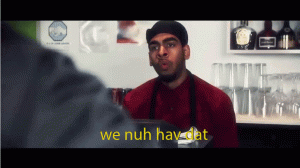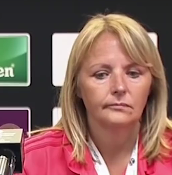With its gables, turrets and iron railing, U.S. Soccer House — as the mansion housing the U.S. Soccer Federation is known — looks more like a fortress than the headquarters of a major sports organization. It is fitting: The federation is on the defensive.
It is bad enough that the men’s national team failed to qualify for this summer’s World Cup, a fact the federation was reminded of daily as the tournament in Russia dazzled global audiences on its way to crowning a new champion Sunday.
The real threat, however, to its mission to make soccer one of America’s pre-eminent sports is here at home, where youth players are abandoning the game in alarming numbers.
Over the past three years, the percentage of 6- to 12-year-olds playing soccer regularly has dropped nearly 14 percent, to 2.3 million players, according to a study by the Sports & Fitness Industry Association, which has analyzed youth athletic trends for 40 years. The number of children who touched a soccer ball even once during the year, in organized play or otherwise, also has fallen significantly.
In general, participation in youth sports nationwide has declined in the past decade, as children gravitate to electronic diversions and other distractions.
Yet in recent years, while soccer continued declining, baseball and basketball experienced upticks, buoyed by developmental programs begun by Major League Baseball and the National Basketball Association
“It’s lost more child participants than any other sport — about 600,000 of them,” said Tom Farrey, executive director of the
Aspen Institute Sports & Society Program. As he pointed out, that’s enough to fill every stadium on any given match day during the 2026 World Cup, which the United States will host with Mexico and Canada.
The decline has been felt everywhere: recreational leagues in longtime soccer hotbeds here; high-profile traveling teams from Maryland to California; programs targeted at Latino and immigrant populations in South Texas. High burnout rates from pushing children into travel soccer too young as well as the high costs of programs have also contributed to the lower numbers.
Lisa Sparrow has seen the sport lose kids up close. She’s a regional commissioner of the American Youth Soccer Organization, known as AYSO and one of the federation’s members, in suburban Evanston, Ill. For $190, children compete in a 16-game season; financial aid is offered. Everyone gets balanced playing time, and the league’s emphasis is on having fun and embracing virtues like good sportsmanship rather than winning.
Still, her league lost 250 players — or nearly 19 percent — from 2016 to last year, she said, and registration is trending downward for 2018.
“There is so much competition out there that there’s been talk about bringing everyone under one program,” Ms. Sparrow said.
Some left to sample other sports, she said, and others were lured away to travel teams such as neighboring FC United, for which parents pay up to $2,500 for a nearly year-round schedule. But as the proliferation of club and travel teams has expanded into the preteen levels, and sometimes even younger, many players get discouraged.
“We put them in tryout and team situations before they are psychologically and emotionally ready,” said Chris Moore, chief executive officer of the U.S. Youth Soccer Association. “So if you can’t make a travel team some kids may say, ‘what’s the point,’ and quit playing altogether."
The exodus of players in youth leagues has drawn recriminations over clubs and leagues that have pushed and profited from a “pay-for-play” model that has turned off parents and kept out talent from poorer, underserved communities.
“My family would not have been able to afford to put me in soccer if I was a young kid today,” Hope Solo, the former goalkeeper of the 2015 Women’s World Cup championship team, said at a conference in New York last month. “That obviously alienates so many communities, including Hispanic communities, the black communities, the rural communities and underrepresented communities. Soccer, right now, has become a rich, white-kid sport.”
U.S. Soccer Federation officials acknowledge that the sport is losing players at a time the federation itself is undergoing critical transition. Ryan Mooney, the federation’s chief soccer officer, said strengthening participation was the foundation of building elite national teams.
“The quality of what you put in is the quality of what you get out,” Mr. Mooney said.
This year, Carlos Cordeiro was elected president of the federation to succeed Sunil Gulati, who declined to run for a fourth term after the men’s team failed to qualify for the World Cup for the first time since 1986.
Mr. Cordeiro has promised to increase the numbers in youth soccer by making it more affordable and more inclusive Currently, American households with more than $100,000 in annual income provide 35 percent of soccer players, according to the Sports & Fitness Industry Association, compared with 11 percent from households earning $25,000 or less.
Brad Rothenberg, who co-founded Alianza de Futbol to develop amateur soccer among Latinos, said U.S. Soccer had invested little in identifying talent in Latino and African-American communities. Over the past decade, his organization has held more than 300 events across the country for young players and has sent dozens of them to club teams in Mexico.
In 2016, however, Mr. Rothenberg, whose father, Alan, was once the president of U.S. Soccer, said the federation told him not to promote its brand to the 250,000 Latinos who attend the club’s events, partly because Alianza had not produced what the federation thought was an elite player, partly because it was not a member of U.S. Soccer.
A spokesman for U.S. Soccer declined to comment about the incident.
“If year after year, at every decision point, U.S. Soccer continues to alienate Latinos and blacks, we are going to sit on the sidelines and watch the rest of the world get better,” Mr. Rothenberg said.
The Urban Soccer Leadership Academy in San Antonio illustrates the potential for growth. It has expanded to more than 500 players — predominantly Latino, low income and considered at high risk of dropping out of school — by working closely with the city’s schools.
Although the federation has installed an academy system to standardize coaching and culture, many believe it chokes off a pathway for young players. Academy members are forbidden to play on their high school or college teams.
“Soccer is the fastest-growing sport in urban schools,” said Ed Garza, the former mayor of San Antonio and president of the academy. “It’s part of the cultural dynamic.
“Why would you want to shut down that potential pipeline?”
When he came here three years ago from the Netherlands, Nico Romeijn, U.S. Soccer’s chief sport development officer, recognized that Americans might want to win too badly.
Parents pay for private coaching and push their children into joining expensive club teams in the hope of chasing college scholarships or even entry at elite schools.
“We need to do a better job of engaging and educating parents,” Mr. Romeijn said.







































